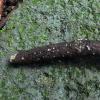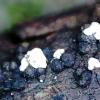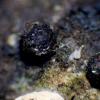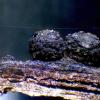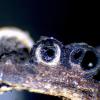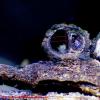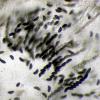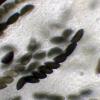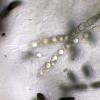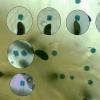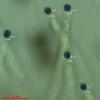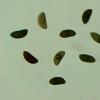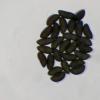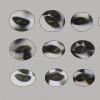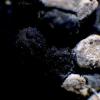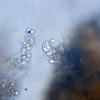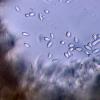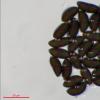
17-09-2025 10:50
Heather MerryleesHi there!I am hoping for any advice on the identif

27-11-2025 11:46
Thomas Læssøehttps://svampe.databasen.org/observations/10493918

29-11-2025 08:40
 Andreas Millinger
Andreas Millinger
Hello,on a splintered part of a branch on the grou

28-11-2025 16:45
Nogueira HéctorNovember 23, 2025 Requejo de Sanabria (León) SPAI

25-11-2025 14:24
Thomas Læssøehttps://svampe.databasen.org/observations/10490522

27-11-2025 15:41
Thomas LæssøeSpores brownish, typically 4-celled; 26.8 x 2.4;

27-11-2025 12:01
Thomas Læssøehttps://svampe.databasen.org/observations/10496727

27-11-2025 11:31
Thomas LæssøeCollectors notes: Immersed ascomata, erumpent thro

23-09-2025 13:31
Thomas Læssøehttps://svampe.databasen.org/observations/10534623

26-11-2025 18:13
The entire run of Mycotaxon is now available throu
¿Rosellinia?
Josep Torres,
20-02-2025 16:03
An apparent Rosellinia located and photographed on February 5th on the island of Barbados (Caribbean Sea).
Spherical ascomata sprouting in a scattered manner on the surface of a small trunk of indeterminate tropical planifolia, without apparently a common subiculum.
Although the ascomata seemed to be in poor condition, some of the perithecia in the humid chamber released spores naturally.
Globose perithecia up to 0.5 mm in diameter, black in color and with a warty surface.
Octosporic asci with measurements of (107.1) 107.11 - 127.26 (127.3) × 8.8 - 11.5 µm. with an amyloid apical apparatus.
Apical apparatus with a contour between cylindrical to slightly angular with measurements of (5.6) 5.9 - 6.8 (7.1) × (5.1) 5.2 - 6 (6.2) µm.
Inequilateral dark brown ascospores, a few of these spores have a sigmoid germinal cleft, most on the less convex side and occupying somewhat a little more than half of than the total length of the spore, with measurements in water of:
(15.2) 16.7 - 19.3 (21) × (6.8) 7.5 - 8.6 (8.8) µm
Q = (1.9) 2 - 2.5 (2.9) ; N = 40
Me = 17.9 × 8 µm ; Qe = 2.2
On the surface of some of these perithecia, a bloom was observed that could correspond to the anamorph or conidial phase of the same.
These conidiogenous hyphae with phialides with measurements of 14 - 19 × (3.1) 3.14 - 3.78 (3.8) µm. that produced conidia with measurements of:
(5.2) 5.5 - 6.7 (7.1) × (3.1) 3.3 - 4 (4.1) µm
Q = (1.4) 1.5 - 2 (2.2) ; N = 20
Me = 6.1 × 3.6 µm ; Qe = 1.7
I don't know much about these species, but based on their characteristics I think they could be a Rosellinia or, to a lesser extent, a Nemania, although I haven't been able to find any in the Keys I use that even remotely fit my proposal.
Any suggestion from you will be well received.
Thank you very much in advance for your help.
Best regards.
Jacques Fournier,
20-02-2025 19:18

Re : ¿Rosellinia?
Hola Josep,
based on the very small stromata with a thick and coarsely cracked surface and ascospores with a ventral sigmoid germ slit it might fit Xylaria parvula, described from Martinique. The paper is availble on Ascomycete.org website, so that you can compare your collection to X. parvula.
The original, unfortunately unique collection differs from yours by slightly smaller ascospores but the variations of the size range are so far unknown. However the spore shape and colour match well. I would say X. parvula with 90% confidence. Nice find!
From your images, the associated white hyphomycete does not look typical of a Xylaria and is rather a contaminant.
Best,
Jacques
Ascomycete.org, 10 (4) : 131–176
Mise en ligne le 09/09/2018
Doi: 10.25664/ART-0239
based on the very small stromata with a thick and coarsely cracked surface and ascospores with a ventral sigmoid germ slit it might fit Xylaria parvula, described from Martinique. The paper is availble on Ascomycete.org website, so that you can compare your collection to X. parvula.
The original, unfortunately unique collection differs from yours by slightly smaller ascospores but the variations of the size range are so far unknown. However the spore shape and colour match well. I would say X. parvula with 90% confidence. Nice find!
From your images, the associated white hyphomycete does not look typical of a Xylaria and is rather a contaminant.
Best,
Jacques
Ascomycete.org, 10 (4) : 131–176
Mise en ligne le 09/09/2018
Doi: 10.25664/ART-0239
Josep Torres,
20-02-2025 21:26
Re : ¿Rosellinia?
Thanks Jacques.
Based on its appearance I had never bet on a Xylaria, I have read the information in the document and although the measurements of the spores in my study are slightly higher, perhaps because they are hypermature spores, the Q ratio does fit quite well, according to the document Q = (1.9–)2–2.5(–2.7), with a Qe = 2.3 and in my study with a Q = (1.9) 2 - 2.5 (2.9) and a Qe = 2.2, in addition the rest of the parameters seem to fit perfectly, the measurements of the perithecia according to the document of 0.6–0.75 mm. × 0.5–0.6 mm., is quite in line with my measurements (0.55 to 0.80 mm.), also the measurements of the asci according to the document of 108–120 ?m. × 9–10 ?m. and in my study 107.11 - 127.26 × 8.8 - 11.5 µm., in addition to the coincidence of the morphology of the apical apparatus.
Everything seems to indicate that you have hit the nail on the head.
Again, THANK YOU VERY MUCH for your help.
Kind regards.
Based on its appearance I had never bet on a Xylaria, I have read the information in the document and although the measurements of the spores in my study are slightly higher, perhaps because they are hypermature spores, the Q ratio does fit quite well, according to the document Q = (1.9–)2–2.5(–2.7), with a Qe = 2.3 and in my study with a Q = (1.9) 2 - 2.5 (2.9) and a Qe = 2.2, in addition the rest of the parameters seem to fit perfectly, the measurements of the perithecia according to the document of 0.6–0.75 mm. × 0.5–0.6 mm., is quite in line with my measurements (0.55 to 0.80 mm.), also the measurements of the asci according to the document of 108–120 ?m. × 9–10 ?m. and in my study 107.11 - 127.26 × 8.8 - 11.5 µm., in addition to the coincidence of the morphology of the apical apparatus.
Everything seems to indicate that you have hit the nail on the head.
Again, THANK YOU VERY MUCH for your help.
Kind regards.
Josep Torres,
21-02-2025 03:01
Re : ¿Rosellinia?
Hello again Jacques.
I was not convinced with the issue of spore measurements, that is why I decided to make a new measurement, for this I used the image where the spores appear grouped, these spores belonging perhaps to those expelled by another perithecium and that I did not use in my previous measurement, I add a screenshot with the measurements of all the spores in the image, in this case with the result of:
(13.4) 15.7 - 17.6 (18.2) × (6.6) 7 - 7.7 (8.1) µm
Q = (2) 2.1 - 2.4 (2.5) ; N = 27
Me = 16.4 × 7.4 µm ; Qe = 2.2
These measurements would be more in line with those cited in the document, which quotes measurements of (13.8–)14.7–17.1(–18.2) × (6.2–) 6.5–7.6 (–7.7) ?m. It seems that spore measurements within the same harvest can vary depending on the apothecium chosen.
Everything seems to fit together at last.
Many thanks for your help.
Kind regards.
I was not convinced with the issue of spore measurements, that is why I decided to make a new measurement, for this I used the image where the spores appear grouped, these spores belonging perhaps to those expelled by another perithecium and that I did not use in my previous measurement, I add a screenshot with the measurements of all the spores in the image, in this case with the result of:
(13.4) 15.7 - 17.6 (18.2) × (6.6) 7 - 7.7 (8.1) µm
Q = (2) 2.1 - 2.4 (2.5) ; N = 27
Me = 16.4 × 7.4 µm ; Qe = 2.2
These measurements would be more in line with those cited in the document, which quotes measurements of (13.8–)14.7–17.1(–18.2) × (6.2–) 6.5–7.6 (–7.7) ?m. It seems that spore measurements within the same harvest can vary depending on the apothecium chosen.
Everything seems to fit together at last.
Many thanks for your help.
Kind regards.
Jacques Fournier,
21-02-2025 18:37

Re : ¿Rosellinia?
great! now we reach 99% confidence, it cannot be more.
Many reasons can explain apparent discrepancies between measurements of ascospores. Occasionally, bigger ascospores yield by 4-spored asci that are not uncommon in Xylariaceae, may account for deviating results and differences betwwen two stromata or even perithecia as you say. A delayed observation in water may also involve some swelling of spores but they become wider more than longer.
Best,
Jacques
Many reasons can explain apparent discrepancies between measurements of ascospores. Occasionally, bigger ascospores yield by 4-spored asci that are not uncommon in Xylariaceae, may account for deviating results and differences betwwen two stromata or even perithecia as you say. A delayed observation in water may also involve some swelling of spores but they become wider more than longer.
Best,
Jacques
Josep Torres,
21-02-2025 22:25
Re : ¿Rosellinia?
Thanks Jacques.
It remains as Xylaria parvula.
I am now editing the species record in our database.
It remains as Xylaria parvula.
I am now editing the species record in our database.
